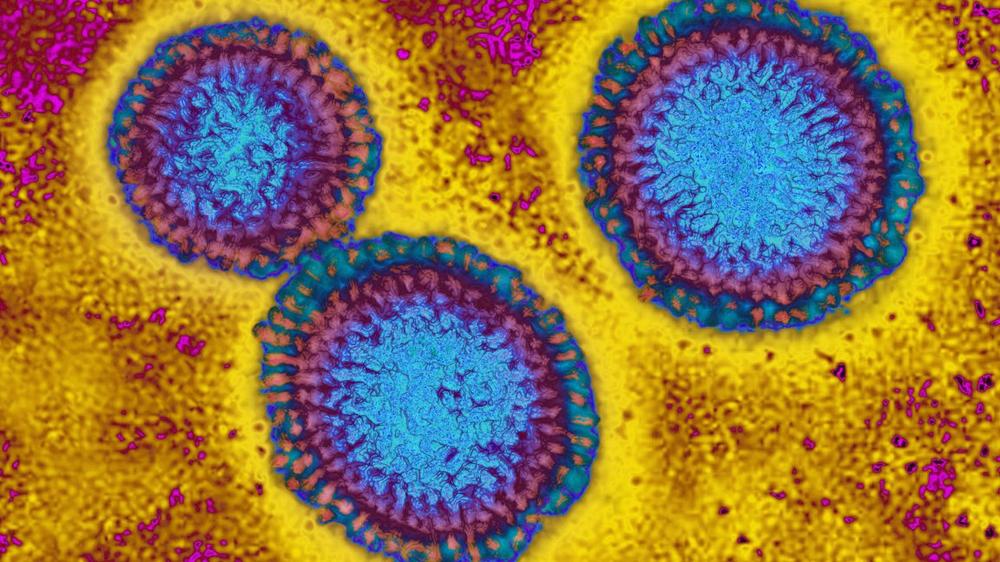Health officials in the United Kingdom are warning that this year’s flu season for the Northern Hemisphere is looking like it will be particularly rough—and the US is not prepared.
The bleak outlook is driven by a new strain of H3N2, which emerged over the summer (at the end of the Southern Hemisphere’s season) sporting several mutations. Those changes are not enough to spark the direst of circumstances—a deadly pandemic—but they could help the virus dodge immune responses, resulting in an outsized number of severe illnesses that could put a significant strain on hospitals and clinics.
In the UK, the virus has taken off. The region’s flu season has started around five weeks earlier than normal and is making a swift ascent.
Jim Mackey, who became chief executive of NHS England in April, is bracing for influenza’s wrath. “There’s no doubt this winter will be one of the toughest our staff have ever faced,” Mackey told The BMJ. “Since stepping into this role, the thought of a long, drawn-out flu season has kept me awake at night. And, unfortunately, it looks like that fear is becoming reality.”
Almost all of the UK cases so far this year have been from influenza A strains, with H3N2 accounting for the lion’s share, according to the UK Health Security Agency. The two circulating influenza A strains are the new H3N2 strain and an H1N1 strain, with an influenza B strain circulating at very low rates. In the latest UK data, H3N2 was behind over 90 percent of cases that had their influenza virus type analyzed.
“Of the two seasonal influenza A viruses, the current dominant circulating virus (A/H3N2) tends to cause more severe illness than A/H1N1, particularly in older adults,” Antonia Ho, an infectious diseases expert at the University of Glasgow, said in a statement. And the early start of the flu season only makes things worse, since not as many people are vaccinated early on, Ho added. “From previous experience, influenza waves that start early tend to affect a larger number of people in the population.”
While the UK faces a harsh season, the US couldn’t be in a worse position to prepare. The Trump administration has severely weakened the country’s public health infrastructure, significantly cutting public health funding to states and the Centers for Disease Control and Prevention, while also annihilating whole teams and projects at the premier public health agency. In addition to that devastation, the government shutdown has halted normal flu surveillance operations.
Normally, the CDC would publish weekly reports with detailed flu surveillance data, indicating regional trends, infection rates, strain types, illness severity, and more. However, the agency’s surveillance reporting page has gone silent, with the latest report dating from September 25. The government shutdown began on October 1, and the US flu tracking typically begins at the start of week 40, which this year was October 4. Even with the shutdown coming to an end, it’s unclear how long it will take CDC experts to recover from the lapse or if they’ll be able to resume operations fully.
Basic data from states, monitored by epidemiologist Caitlin Rivers, finds flu activity is generally still low across the US. But it’s beginning to pick up speed in the South and select states, such as Hawaii, Arizona, and New York.
Get vaccinated
“This is not the time to be flying blind into the respiratory virus season,” Danuta Skowronski, the epidemiology lead for influenza and emerging respiratory pathogens at the British Columbia Centre for Disease Control, told CIDRAP News.
At the end of last month, Skowronski and colleagues published an analysis showing that the H3N2 strain now spreading has accumulated enough new mutations—aka genetically drifted—to the point of being “mismatched” from the H3N2 strain used as a target for this year’s flu shots.
“While mismatched vaccines may still provide protection, enhanced genetic, antigenic and epidemiological (eg, vaccine effectiveness) monitoring are warranted to inform risk assessment and response,” Skowronski and colleagues concluded.
Earlier this week, the UK Health Security Agency published a preliminary study finding that, despite the mismatch, this year’s shot still seems to provide important protection. The study found that soon after vaccination, the vaccine provided 70 to 75 percent protection against hospitalization in children aged 2 to 17 years, and 30 to 40 percent protection from hospitalization in adults. These protection levels are within the typical range for flu vaccines, but they’re more often seen at the end of a season—when vaccine protection has waned some—rather than early in the season, soon after vaccination.
Still, officials called the results “reassuring.” In particular, officials noted the strong numbers in children, which parents can tell you, have the ability to be superspreaders.
“The high vaccine effectiveness in children strengthens the case for ensuring all eligible young people get vaccinated,” Jamie Lopez Bernal, Consultant Epidemiologist for Immunisation at UKHSA, said. “When more children are protected, it helps stop the spread of flu to others around them.”
“The bottom line is that it’s looking possible that we may be facing a very bad flu season this year, and the best thing we can all do right now to tackle the problem is to get vaccinated,” Adam Finn, professor of Paediatrics at the University of Bristol, said in a statement.
Although it’s unclear how flu vaccinations are going in the US this season, at the end of last season, only about 47 percent of adults and 49 percent of children had received vaccinations.

 VCs abandon old rules for a ‘funky time’ of investing in AI startups
VCs abandon old rules for a ‘funky time’ of investing in AI startups